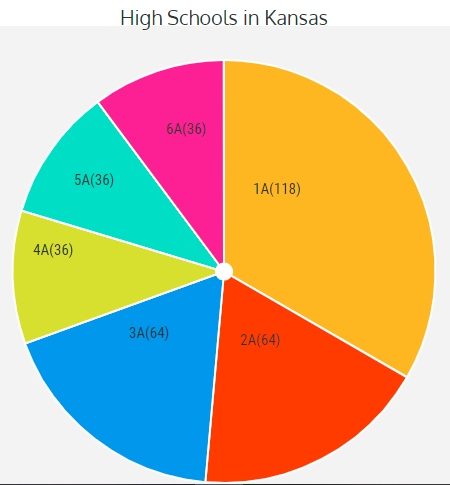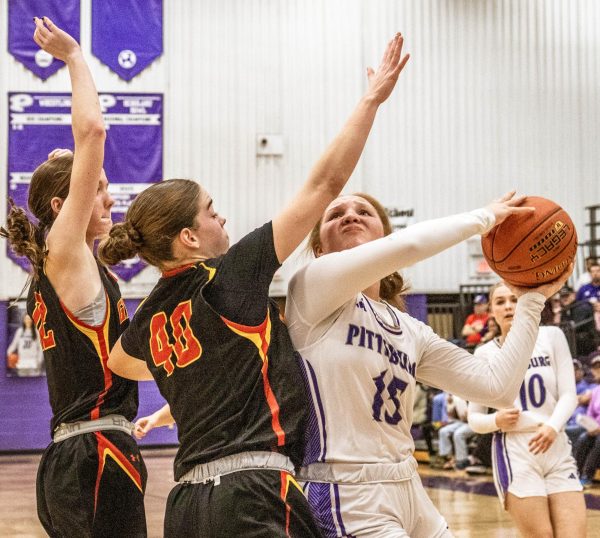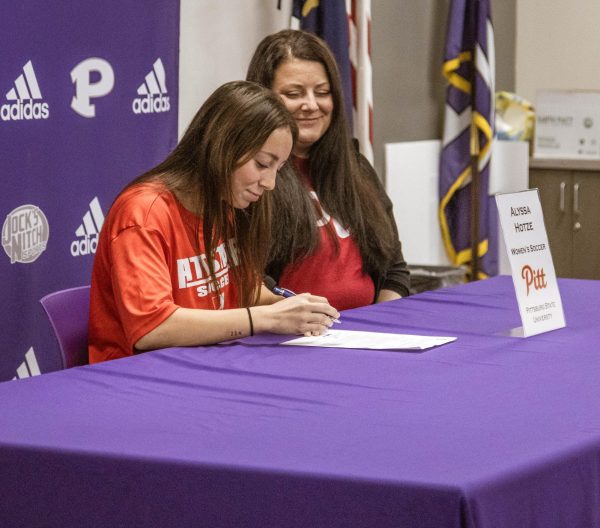Spotlight on Sports In Kansas
A New Way to Recruit
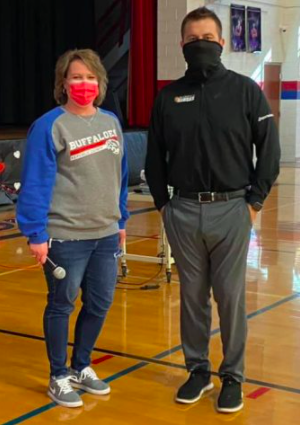
Photo by: unknown
Chet Kuplen poses in high school gymnasium while working for Sports in Kansas.
Due to the global pandemic, sports recruitment has been substantially different this year. This year recruiters are having to find different ways to find out about players.
Chet Kuplen is the founder and CEO of Sports in Kansas, the #1 followed sports platform in the state of Kansas. He is a graduate of Frontenac High School and is the host of five radio shows across the state of Kansas, as well as being the manager of all of the platforms of Sports in Kansas online.
“Sports in Kansas covers high school sports and sports in the state of Kansas on multiple media platforms whether that’s social media, website, radio, television, or events,” Kuplen said. “We highlight, promote, and cover athletes, coaches, and teams across the state of Kansas.”
According to Kuplen, having fewer spots on a college roster has been one of the biggest problems that recruiters are facing.
“One thing we have to address is how all of a sudden you have sixth and seventh-year seniors in college,” Kuplen said. “That will significantly hurt roster spots for 2021 grads and 2022 graduates because you have kids staying in college for an extra year to play. We will see the effects of this for a while.”
Sports in Kansas have been forced to eliminate all possible in-person events as a result of COVID-19, creating more focus on the remote side of athlete recruitment.
“The biggest difference for me has been not getting to be at many camps and combine. Luckily I work in a remote world most of the time where I am doing radio shows via Skype or Zoom. I am still doing in-school speaking. Of course, the difference now is that I am not shaking hands and I am not being approached by people for as many pictures,” Kuplen said. “I can still present, speak, and students can remain socially distanced in our presentations, so overall it hasn’t been too different.”
According to Kuplen, technology has been a huge help with all of the differences regarding recruiting.
“Technology has been a lifesaver in recruiting right now. Zoom and Facetime [give us] the ability to get that face-to-face [aspect], even if it’s not in person. Recruiting has changed so much in the last 15 years. You can [find] a kid in a tweet now and get to his highlights then have an offer five minutes later,” Kuplen said. “Back in the day, a coach would have had to come to your school to see you play on a Friday night or seen you at a camp.”
One of the biggest ways that recruiters have learned about players is through film softwares like Hudl. Kuplen says that this can have advantages and disadvantages.
“You get to see any recruit everywhere with the ability to have a video online. The days of sending a VHS tape in the mail to 100 coaches across the nation are over. The good thing is access,” Kuplen said. “The bad thing is everyone else also has access and it makes recruiting more competitive with a player being hard to be hidden anymore.”
Although the film has positives in the recruitment process, it’s proven to have its negatives also.
“The other thing about the film is how do we know the level of competition in the film is any good or who are they playing? That’s why camps and combines work well because you’re going up against the best of the best across the state or country to know how you compare to others,” Kuplen said.
Although sports look different this year, Kuplen thinks these changes could have a positive impact on the future of the sports recruitment process.
“The social media aspect has connected the dots for athletes to coaches all across the world, it’s definitely made it a smaller world. It’s how our business model has worked as well,” Kuplen said. “We are everywhere 24/7 with the click of the button because of social media.”
Your donation will support the student journalists of Pittsburg High School - KS. Your contribution will allow us to purchase equipment and cover our annual website hosting costs.
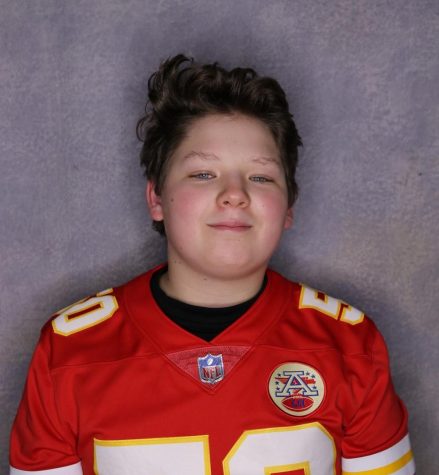
Josh Ozbun is a freshman and this is his first year on staff. He is also involved in Band, Marching Dragons, Debate, Weights, and Tennis.


